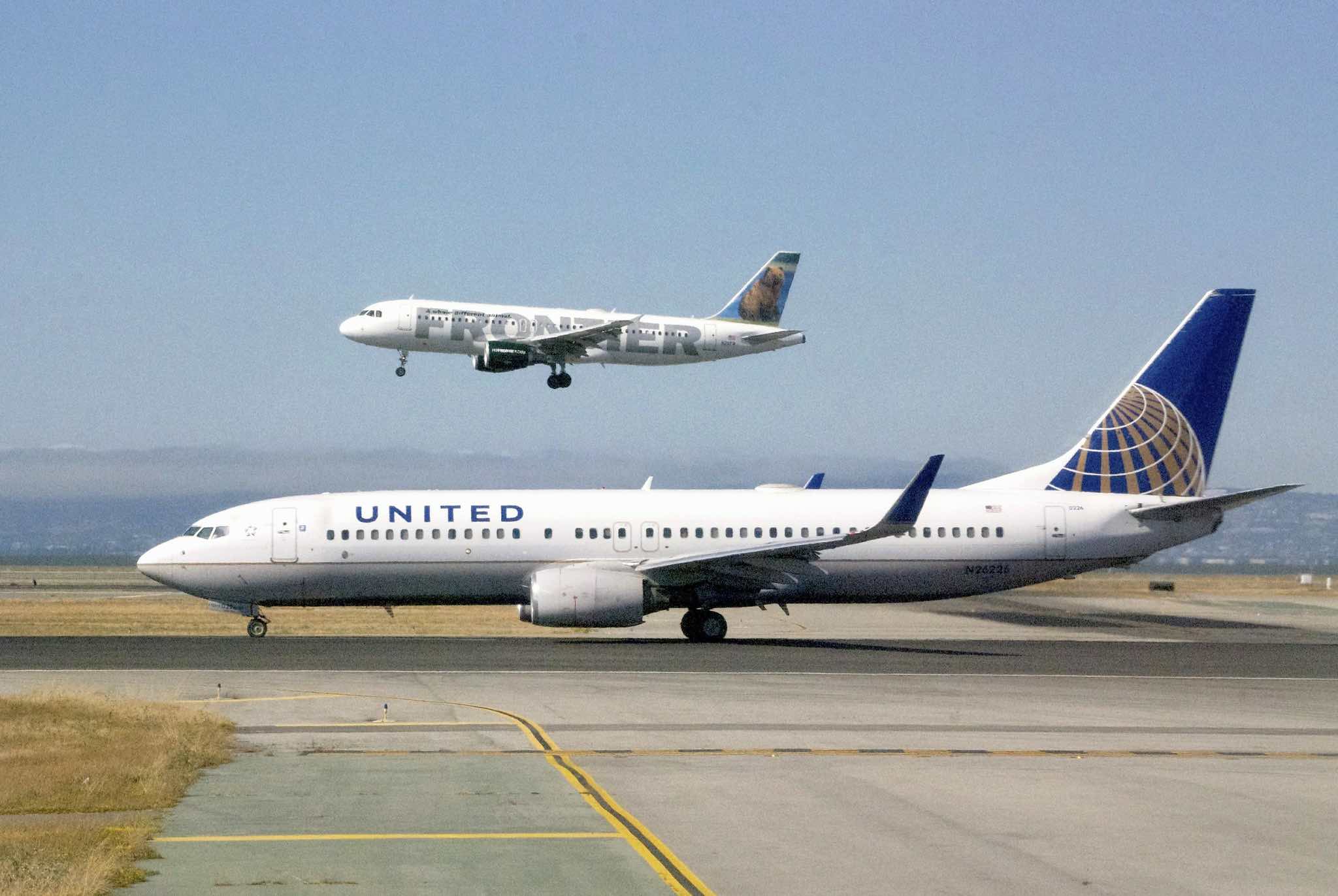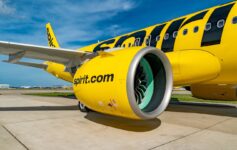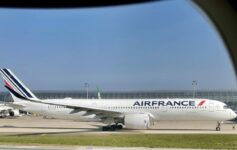As I predicted a few months ago, United and Frontier are positioning themselves to benefit from Spirit’s demise, plus the biggest thing they are missing.

Called It
Well, well, well… the two players I’d suggested would be interested parties in Spirit Airlines’ failure have made moves this week to fill a potential gap left by Spirit should it collapse. I covered in a prior article why the two would be interested. Frontier makes the most sense due to its prior attempts and conversations with Spirit management to merge, or acquire the airline. It ultimately lost its bid to JetBlue in an acquisition that was approved and then challenged by the DOJ, which successfully sued to block the transaction. It’s believed that JetBlue is no longer in a position to purchase Spirit even in its current state.
United aligns for a few reasons. Fleet commonality is helpful, though Delta and American Airlines both also feature a significant Airbus A320-family fleet. American already has deliveries arriving soon and couldn’t really make use of a Fort Lauderdale hub given its massive presence just down the beach in Miami, but United has quietly toyed with the notion of a southeastern US hub.
United CEO, Scott Kirby, has been far more aggressive for expansion, jumping the line to grab new A320s from Airbus. He’s also been clear that he does not believe the Ultra Low Cost Carrier model is long for this world, though he essentially operates a business segment that mirrors exactly the ULCC model nickel and diming for every possible revenue channel. Basic economy was its strongest growth segment.
It’s Not The Acquisition I’d Expected
I had presumed that Frontier or United would attempt to grab Spirit for the aircraft as it’s been difficult to increase A320 fleets given the engine challenges over the last few years. But neither airline seems to be playing to buy the carrier and acquire the debt. It’s entirely possible that legal fees and the regulatory process could add a significant cost if the not become the majority cost of purchasing Spirit. Integrating equipment and staff, complying with labor laws – it makes sense that United specifically isn’t as interested in buying the carrier out of bankruptcy.
However, both carriers have made moves to fill presumed gaps assuming a total failure by Spirit and accelerating the pressure and financial pain on Spirit as they enter those markets. Rather than compete on every route, which neither carrier has the equipment or staff to do, they are picking markets where they believe they can be successful. It’s possible that if Spirit is to entirely fail, both carriers will compete for assets, staff, and routes but doing so in this manner is far less expensive, risky, and distracting.
The thought is: there’s no need to buy the carrier now, let it die and buy the pieces at fire sale prices. Staff will gravitate toward options and run into any carrier’s open arms.
They aren’t wrong in this assessment.
Value Missing
There’s one key thing that both are missing by not buying Spirit outright. There is value in its loyalty program marketing contracts, and lists. In fact, though Free Spirit is not nearly the behemoth of even Frontier’s Go Wild! loyalty program, it is likely the only corner of profit inside the airline that’s losing almost $100MM/month. Buying a mailing list after the airline is dead may still provide some of that value, but acquiring it as a going concern would certainly lead to greater value and utility.
Conclusion
For all of the prognostications bloggers like myself make, it feels nice to get one right – even if it doesn’t take the exact shape or approach I had predicted. The approach both carriers are taking in an assumed total failure of Spirit is not unwise, even if it’s a depressing way to view the opportunity. Frontier appears to be playing for both scenarios (one of acquisition and one of Spirit’s failure.) Without Spirit in the picture, fares are likely to increase and some routes will be abandoned leaving travelers with fewer, or in some cases, no options. But without a willing party and path to continuation it seems to solely be a matter of time before Spirit is gone and carriers jump in where they feel they can find value.
What do you think?




Spirit is done. Everyone but Delta and AA will see value in the pieces.
What makes you believe that because they aren’t making as much noise about Spirits demise as United and Frontier?
If Delta is going to grow AUS into a hub they’re going to need aircraft. They signed a long term contract with TPA airport authorities making them the principal operator out of the new Terminal D once construction wraps up. They would only have to share the terminal with a small number of international carriers. Could TPA become a focus city for Delta if so they going to need aircraft and they aren’t getting those MAX10s anytime soon. Florida is a very important market to Delta, American and Southwest. I can’t see Southwest going after any of Spirits Airbus aircraft however they could be interested in acquiring additional gates at airports where Spirit currently has leases.
Airlines like Delta, American and Southwest are playing cool and pretending its business as usual not showing any outward interest in Spirit. However, it doesn’t mean they don’t have plans of their own to grab a piece of Spirit assets once liquidation begins. Anyone who thinks United and Frontier has this thing in the bag may be shocked at how ravenous the other carriers become as soon as the fire sale begins. We may even see JetBlue pop its head in once the fire sale begins.
thank you.
Some people don’t realize that the people that make the most noise aren’t the ones that do the most; in fact, NK’s greatest overlap before its cuts was with WN and then w/ DL. WN overlapped significantly w/ NK at MCO, FLL and LAS and NK took the axe to its presence at LAS.
DL is the largest legacy carrier in each of NK”s largest markets including DTW.
as for fleet, there is a great deal of expectation that NK will reject leases on a lot of planes. They might walk away from their NEO fleets completely but UA has close to 100 new aircraft due in 2026; they don’t need any new airplanes. F9 also has a massive order book that requires massive growth – which they cannot financially do right now.
And all of those broken NEOs are of no use to anyone right now; the only carrier that could take those NEOs and get them back in service faster than other airlines is DL which has the maintenance contract for the Geared Turbofans. DL would have to wait for seats but there is a long line for MRO capacity to repair the engines anyway.
Leasing companies know a big chunk of NK’s fleet is not usable. by allowing a few bidders to not take the aircraft w/ bad engines – potentially up to 70 aircraft by next year – minimizes the value of the entire NEO fleet.
There is the possibility that NK will just keep the CEO fleet which has lower lease rates and are in service.
btw, F9’s most direct network competitor is UA.
Spirit far from done. If it doesn’t get acquired by Frontier they will emerge from bankruptcy in 6-9 months much leaner and smaller. As a bankruptcy attorney for 15 years I have seen companies in way worse shape. Spirit is still “making money” however, they have a cost issue. If they get their costs down they will be fine and that is what we do in bankruptcy court.
If so, why did they fail to address labor & operating costs in the first go around? Indigo Partners and Spirit leadership must of gotten some bad advice from accountants and bankruptcy counsel.
As you elude to, Chapter 22 (Chapter 11 x 2) could turn into a long, drawn out, expensive, & divisive conflict. Maybe, no one had the stomach to deal with the unions.
However, I guess we all should have faith, for TWA had the distinction of Chapter 33!!
I feel the other airlines will wait out for Chapter 7 because:
– airframe leasing agents are already shopping the Spirit fleet: easier to deal with an agent versus a bankruptcy judge
– NK has a huge presence at LAS, but Vegas is more leisure, less yield, and swamped with ULLC carriers
– airlines are god awful at integrating labor contracts during acquisitions; much easier to hire them once they get their pink slip
– B6 will defend its southern flank (FLL) due to its large overlap with NK. B6 needs to expand westward to pick up the slack and may do the same at MCO
– UA wants a southeast presence; but FLL is more leisure and low yield (ie: retirees) compared to Miami which is more business, Latin America focused
– NK slots and gates will most likely revert back to airports; again, easier to deal with airport authority versus bankruptcy judge
– Breeze and any of the other ULLC will immediately backfill any gaps in NK coverage. If in doubt, look how quickly Breeze took over when Avelo vacated California.
– the frequent flier roles of Spirit (Free Spirit) will fail to yield big spenders on premium airline tickets. Their biggest yield is the absurd interest rate they pay on outstanding balances which the bank gets to keep.
– there is a surplus of capacity across the US and only a handful of airlines are profitable.
In a cruel twist, I image B6 is happy their acquisition of Spirit failed a few years back. If it had carried thru, we would be reading about JetBlue’s petition for Chapter 11.
Spirit isn’t going Chp 7. There are a lot of former Spirit Pilots that gave up decades of seniority trying to justify their decision by constantly posting about the demise of Spirit on social media. The other segment of doom and gloomers are junior pilots at other airlines hoping their airline is going to acquire Spirit assets in a liquidation for a quick progression. Unfortunately, ego clouds sound judgment.
I will say it again, Spirit isn’t going chapter 7. Guaranteed.
BIlly,
more significantly, there are airline execs whose need for self-validation is about the failure of other airlines rather than just running their own airlines to best in class standards.
It’s worth noting that F9 and UA both have multiple open labor contracts.